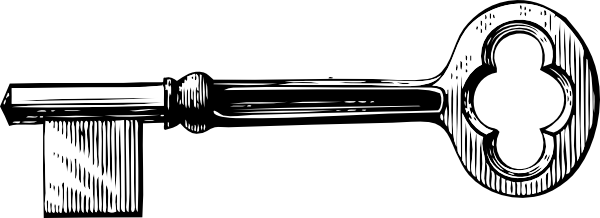DID
YOU KNOW THAT
YOU
CAN LEARN PHYSICS
FROM
SWIMMING ?
Learn
about the science in:
● Moving
Through Water vs. Moving Outside Water
● Diving
vs. Cannonball
It
looks at the following questions:
What
is the connection
between
buoyancy and gravity?
Why
is water more viscous than air --- and just WHAT does
viscous mean?!
What
simple machine in my body helps me swim?
GATEWAY
TO SCIENCE:
Sports
and Games
-----------------------------------------------
INSIDE p. 2 (left)
WHAT
KIND OF FORCES ARE INVOLVED IN ….?
walking
– bicycling – swimming
Walking Lifting my legs and swinging my arms, I work against GRAVITY (and
AIR RESISTANCE if I walk into the wind).
Bicycling Because I'm moving faster than walking, I'm working against
more AIR
RESISTANCE plus GRAVITY.
Swimming My BUOYANCY tends to cancel out the effect of GRAVITY.
(See the center column.
)
One
more thing!
WATER
RESISTANCE slows you down.
This is because water is more
VISCOUS and more DENSE than air.
Well,
what does viscous mean?
A
viscous liquid is resistant to flow. Think of molasses, honey,
and ketchup!
What
does dense mean here? The same amount
of water (a liquid) weighs more than the same amount of air (a
gas). Think of a balloon full of water vs.
a balloon full of air!
------------------------------------------------------------------------------
INSIDE p. 3, center
WHAT
KIND OF THINGS CAN I LOOK FOR?
Let's talk about
buoyancy!
Definition:
Buoyancy: Tendency
to float or rise when submerged in fluid
Buoyancy
is the balance between:
pressure
of water, pushing UP
and
force
of gravity, pulling DOWN
When you are
stretched out flat,
there is more surface for the water to push UP
on.
Therefore (∴)
:
Cannonball
© vs. Diving \
With
a small, concentrated surface area, you will sink!
------------------------------------------------------------------------------------------------
INSIDE p. 4 right
Newton's
3 Laws of Motion
1st An
object not moving tends to stay that way unless it comes in contact
with an outside force. An object that is in motion also has a tendency to stay that way, unless it comes in contact with an outside force. This tendency is called INERTIA. The tendency for a moving object (you) to stay in motion, when swimming, does not hold up well due to water resistance. Why? Water resistance is the “outside force” acting on the object, you.
2nd Force
is mass combined with acceleration --- or F = m∙a
Let's think about simple machines. What parts of your body work as a simple
machine to accelerate yourself and give more FORCE
and speed for less effort?
(Is this part:
an inclined plane? a screw? a lever? a rope and pulley? a wedge?
a wheel and axle?)
3rd Every
ACTION has an equal and opposite REACTION.
So when you push
backward – an action – on the side of the pool,
you go forward – an equal, opposite reaction.
-------------------------------------------------------------------------------------
OUTSIDE, left
NOTE
The
terms water resistance and air resistance used in
this leaflet are commonly referred to as “drag.”
Sports
and games are the gateway to science,
and
YOU hold the key!

Also,
did you know......?
Muscle
is more dense than fat
--- so fatter people are more buoyant.
_________________________________________________________
OUTSIDE, center (this is the back of the leaflet)
SWIMMING........
is
just one of endless ways to gain an understanding of physics and
geometry. I hope this leaflet introduces you to seeing
things you never saw before – or wondered about but just didn't
know where to start.
Physics
and geometry come into play in every activity and event going on
around us.
Knowing
how things work can add to your performance and to your fun. So give it a try. How?
Thank you! Kathy Hogan
Information
for this leaflet is thanks to:
www.explainthatstuff.com/swimming-science
Check it out for more on swimming science!
Check
the library for this book, too:
Science
Behind Sports: Swimming Lizabeth Hardman, Lucent Books, New
York, 2012
|
If you love playing sports and games but think you don't like science, think again--SPORT SCIENCE. Welcome to Gateway to Science: Sports and Games!
Saturday, September 10, 2016
LEAFLET: PHYSICS OF SWIMMING
POWER OF TEN lists, rev. 9.26.17
POWER
OF TEN
My POWER
OF TEN lists are groups of 10 science terms. In my study of physics and sports and games, etc., these words have stood out for me. They stand out because for the most part they are terms, or concepts, that we already understand in everyday life.
Many of them are self-explanatory. Others need a little explanation but can be easily understood. To some extent these words are arranged here so that you can see their relationship to each other. If you make up sets of 10 cards each, you will hold in your hand a solid start to gaining a working knowledge of physics and geometry.
Here is the POWER OF TEN.
I believe that with these you will begin to have the power!
I believe that with these you will begin to have the power!
Power
of Ten.1 Physics
energy motion gravity
friction (includes resistance and drag)
forces
of: push, pull, turn (torque) inertia
collision
(elastic and inelastic) momentum
center of mass / center of gravity buoyancy
Power
of Ten.2 Geometry
straight
line curved line broken line arc
plane perpendicular ( T ) parallel
angle
of access / angle of reflection axis of rotation
trajectory
trajectory
Power
of Ten.3 Sound and Light
frequencies the electromagnetic spectrum
audible
sound waves vibration music
reflection
(echo) reflection (image)
visible
light waves refraction art
Subscribe to:
Posts (Atom)
